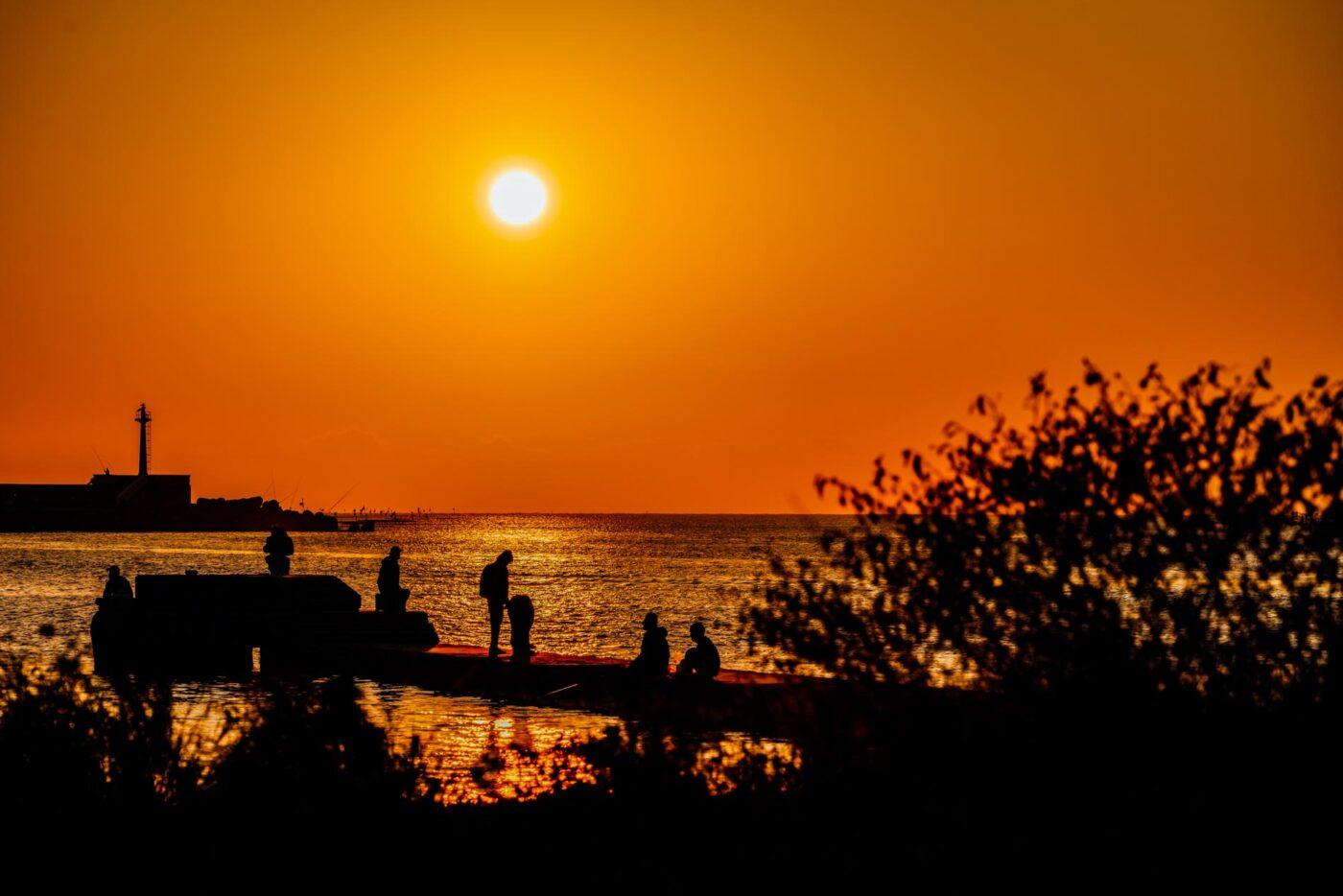Our Themes: Coast, Nostalgia, Food
TEXT / RICK CHARETTE
PHOTOS / VISION
We’re taking you out now on a cultural fact-absorption tour divided into three thematic segments. These themes are key to an accurate understanding of the proud old city of Tainan, in the southwest. Development of this land’s oldest city started when the Dutch chose it as base for a 1600s colonial adventure; it was Taiwan’s Qing Dynasty imperial capital for over 200 years.
“Coast” – i.e., the Taiwan Strait littoral – has always been intrinsic to its identity. Tainan’s long history has brought an inheritance of fascinating “Nostalgia” attractions unparalleled in Taiwan. And its role as a crossroads of regional and further-flung cultures has brought it renown as a creative “Food” melting pot, especially for “small eats” – i.e., snack foods.
Tour 1 – Coast
The lands along Taiwan’s southwest coast are extremely flat, barely above sea level. This is a blurred dry/wet world of wide tidal flats, lagoons, wetlands, mangrove swamps, fish farms, salt pans, and just-offshore silt islands.
Without your own wheels? Ply Tainan’s coastal stretch using the hop-on/hop-off bus runs of the convenient Taiwan Tourist Shuttle service (www.taiwantrip.com.tw). The 88 Anping, 99 Anping Taijiang, and West Coast Expressway routes will get you to or very close to most attractions introduced herein.
Yuguang Island is Tainan’s sole silt island directly off the city’s old urban core, reached by a short bridge close to the popular Eternal Golden Castle attraction (a 99 Route stop). Meander low-rise boardwalks through planted forest, enjoy the outer-side bay, fringed by an oyster-rack flotilla, and discover Tainan’s milkfish-farm industry at the Saba Milkfish Theme Museum (128-2, Yuguang Rd.)



Just to the north of Anping District is the seaboard Taijiang National Park (www.tjnp.gov.tw). Give time to the bold-architecture, very informative visitor center, its gleaming white-walled buildings propped atop pilings simulating an old-time fishing hamlet. At the park’s nearby Sicao Green Tunnel, take a motorized raft ride (fee) through Taiwan’s first canal (long used for salt and cane sugar transport), dating to the 1870s. Mangrove forest has been allowed to return here.



Further north is the park’s giant Qigu Lagoon, Taiwan’s largest, festooned with oyster-farm racks. Overlooking the lagoon at its southwest edge is Guosheng Lighthouse, at Taiwan’s westernmost point.


Inland from the lagoon’s north section is the walkable Qigu Salt Mountain (more in our feature article, page 12), on Taiwan’s one-time largest solar salt field. Taiwan’s production ended with WTO entry (2002), no longer economically competitive. Near the park’s north tip is the Jingzaijiao Tile-paved Salt Fields, Taiwan’s oldest salt fields, created in 1818, today operated as an industry-history showcase.


North of the park is the monumental Nankunshen Daitian Temple, largest and earliest of Taiwan’s many temples dedicated to what are called the “plague gods.”

Tour 2 – Nostalgia
Tainan’s old urban core, attracting tourists with many heritage sites, is in the mainland area that Yuguang Island faces. Another distinctive element in local nostalgia tours – Tainan’s denizens, especially the younger entrepreneurial crowd, love opening quirky retro-personality boutiques and cafés in legacy architecture.
Tainan’s urban center is quite compact and easy to explore on foot, but if a look at a map tells you distances are beyond your ambition and some other transport mode is what you need, your answer might be YouBike public bikes (www.youbike.com.tw). Stations are numerous, rentals are cheap, and motor-vehicle traffic in the city’s core is comparatively light.
Lao Cuo 1933 (lit. “Old Residence 1933”;No.27, Ln. 51, Sec. 1, Beimen Rd.; facebook.com/oldhouse1933) is a short hop from Taiwan Prefectural City God Temple. This is a singular Taiwan take on the bistro concept – a combo traditional Taiwanese-style beerhouse and BBQ joint located in a sanheyuan heritage structure (yes, constructed in 1933), with indoor and alfresco courtyard seating.


A quick stroll from Hai’an Road Art Street is Art 11 Vintage (No. 8, Ln. 209, Sec. 2, Zhongzheng Rd.; facebook.com/art11vintage). Secreted away in a tight alleyway warren of vintage buildings, this cubbyhole two-story shop (its edifice over 70 years old) is crammed with retro Americana-theme 1950s apparel and adornments. Why this nostalgia theme? US military personnel were stationed in Tainan/Taiwan from the ’50s through the ’70s.


Asuka Antique (No. 62, Ln. 158, Sec. 2, Zhongyi Rd.; asukaantique.co, Chinese) is found in close proximity to Chikan Tower and a number of other heritage nostalgia attractions. Along a quiet lane, its home are two old street-level shop spaces that have been gutted and conjoined. It brims with curio rarities and oddities with a “bygone Taiwan” theme.


Right inside the cherished old Yongle Market is Café Chamber (No. 30, Ln. 4, Pucheng St.; facebook.com/cafechamber.tainan). Ensconced up on the second of the market’s two levels, it’s most aptly named, consisting of a single tiny room. Step inside and deliver yourself to the décor and music hip in Hong Kong’s Kowloon of the 1960s.

Tour 3 – Food
For 200-plus years, through the imperial era, Tainan was the main gateway into Taiwan, concomitantly importing culinary influences from throughout the region and places beyond. At the same time, the warm and fertile southwest is an agri-produce powerhouse, delivering the highest-quality ingredients to Tainan cooks and chefs at deliciously reasonable prices. And while in every culture palates change through the generations, Tainan folk have through the eras maintained a love of night-market and small-eatery victualing. The creative range of its savory and sweet snack foods, called xiaochi or “small eats,” is revered throughout the island.
On one of the old city core’s busiest food streets, and not far from Blueprint Culture & Creative Park, A-Ming Pig’s Heart Glass Noodles (No. 72, Bao’an Rd.; www.facebook.com/amingzhuxing) is a family-run eatery over 70 years old. Beyond the signature dish, next-most-coveted is the Garlic Pig’s Feet.


Also nearby the Blueprint complex is the locals-beloved A Hsing Congee (No. 289, Sec. 3, Minzu Rd.) doors first swung open in 1965. The trademark congee here features deboned milkfish, meatily chewy, no fishy taste, hint of sweetness. Seafood being big in the Tainan region, oysters are also added.


Lo Cheng Migao (No. 241, Sec. 2, Minzu Rd.) is in close proximity to the abovementioned Asuka Antique. Migao is glutinous rice with various savory toppings, notably braised minced pork. Also of special note here is the Four-Herbal Pig’s Intestine Soup.



Just off Shennong Street, thickly lined with heritage commercial buildings, Kangle Street Beef (No. 325, Kangle St.). Soup sells a unique Tainan beef dish, prepared with paper-thin slices of hours-old raw beef plunged into scalding clear soup just before presentation.


All of the above establishments have been deified in Michelin’s Taiwan guide. Chou’s Shrimp Rolls (est. 1965; No. 408-1, Anping Rd.; chous.com.tw; Chinese) has not yet, but island gastronomes insist the time shall come. It’s located on foodie-heaven Anping Old Street, site of Taiwan’s first Dutch settlement. Shrimp rolls are iconic here, Taiwan’s answer to Japan’s tempura, and this establishment is the recognized Tainan shrimp king.

About the author

Rick Charette
A Canadian, Rick has been resident in Taiwan almost continually since 1988. His book, article, and other writings, on Asian and North American destinations and subjects—encompassing travel, culture, history, business/economics—have been published widely overseas and in Taiwan. He has worked with National Geographic, Michelin, APA Insight Guides, and other Western groups internationally, and with many local publishers and central/city/county government bodies in Taiwan. Rick also handles a wide range of editorial and translation (from Mandarin Chinese) projects.












